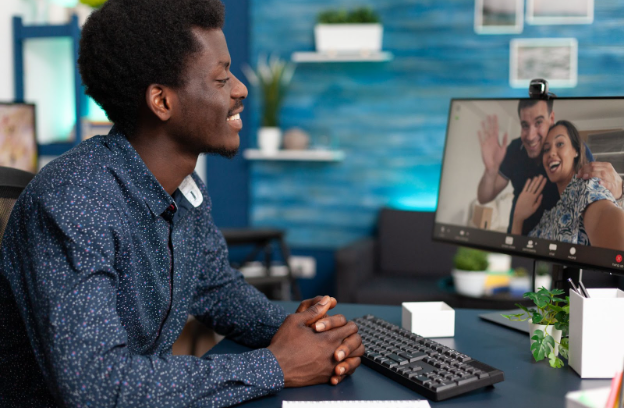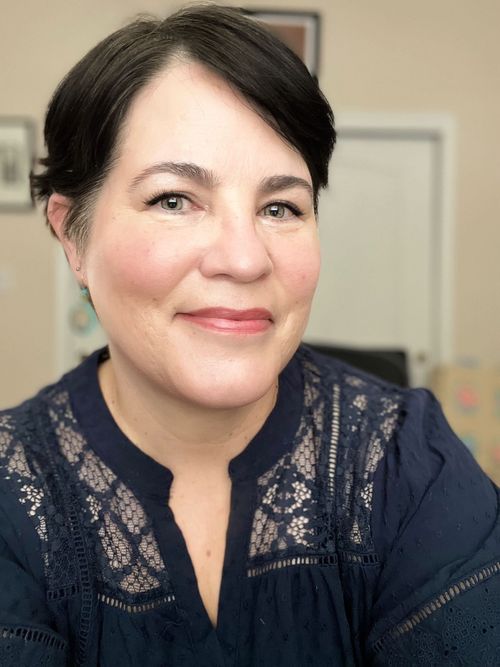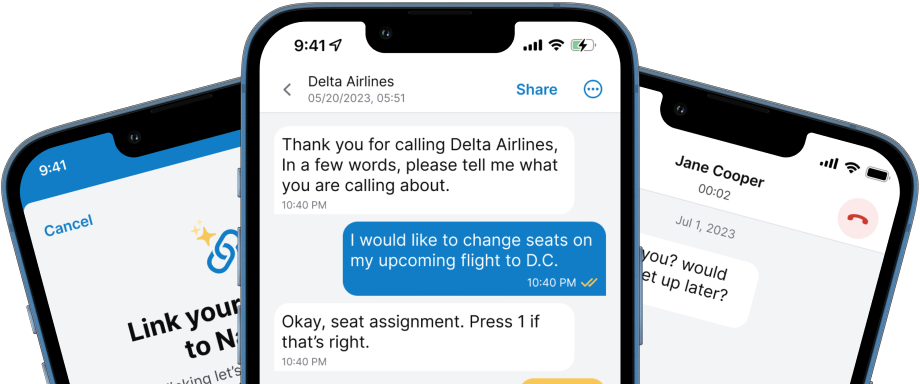Telephone Communication for Deaf People: Improving Access Through Technology
Modern technology has improved telephone communication for deaf people. Click here to learn all the different ways deaf people can

Introduction
Communication is the root of all human interaction. Without it, we can’t share our thoughts, emotions, and needs. It’s an essential part of connecting with others.
Despite its significance, telephone communication can be challenging for deaf individuals. Thankfully, technological advances have led to the development of different tools that make telephone communication much more straightforward.
This article will explore some of these tools, list some helpful resources, and empower deaf people to make their telephone communications a smoother and more enjoyable experience.
The Challenge of Telephone Communication for Deaf People
The telephone has always been a source of frustration and anxiety for the deaf community. Traditional phone conversations rely solely on audio, which means missing important information, dealing with misunderstandings, and feeling left out.
Before the TTY, the first telephone device for the deaf, we depended on family and friends to facilitate phone calls for us. There were no private phone calls.
But technology has provided new solutions that bridge this communication gap and make telephone calls accessible for deaf people.
Solutions for Telephone Communication for Deaf People

There is no one-size-fits-all solution when it comes to telephone communication for deaf people. Just as deafness is a spectrum, some deaf people may have different preferences and different levels of hearing loss.
Below are some of the solutions and tools that can make telephone communication for deaf people easier:
Internet Protocol (IP) Relay
IP Relay uses speech recognition to convert spoken words into text, enabling deaf people to read what the other person is saying in real-time.
These apps can be installed on mobile devices, allowing for convenient communication 24/7, without needing other devices or services.
Some IP Relay providers include:
- Nagish
- Ava
- RogerVoice
- Sprint
Internet Protocol Captioned Telephone Services (IP CTS)

IP CTS enables deaf people to communicate with hearing people over an Internet line, whether on a smartphone or the web. With this service, deaf people type their messages and read incoming messages on a screen; this is with or without the help of an operator. The operator relays the messages to the hearing party and then types their responses back to the deaf person.
Here are some IP CTS providers:
- Nagish
- CaptionMate
- ClearCaptions
- InnoCaption
- Hamilton Relay
- Sorenson
- CaptionCall
- CapTel
- Sprint
Video Relay Service (VRS)
Video Relay Service (VRS) is a popular solution used by many deaf people. VRS uses interpreters who translate sign language into spoken language and vice versa.
Using a webcam, computer, or mobile device, you connect with an interpreter who is proficient in American Sign Language (ASL) or another sign language.
The interpreter then contacts the hearing party and relays the conversation to the deaf individual via video.
Some companies that provide Video Relay Services (VRS):
- ZVRS
- Sorenson VRS
- Convo (Deaf-owned)
- GlobalVRS
Tips for Deaf People When Using the Telephone

While the tools mentioned above can greatly improve telephone communication for deaf people, here are a few tips to enhance the overall experience.
- Inform the other person about your hearing loss: Let the person on the other end of the line know that you are deaf or hard of hearing. This will help them understand and adapt their communication style accordingly.
- Be patient and assertive: Don't be afraid to ask the other person to repeat or clarify if you miss something during the conversation. If you’re using Nagish, it has a built-in option to do that with a single tap.
- Find the right environment: Choose a quiet environment for better clarity during phone conversations. Background noise can make it more challenging to focus on the conversation.
- Use visual cues: When using VRS or video calls, take advantage of visual cues such as facial expressions, gestures, and lipreading to enhance your understanding of the conversation.
- Familiarize yourself with available features: Explore the features and settings of your smartphone or communication tool so you can customize the experience to fit your needs. For example, adjusting the volume or visual display could improve your ability to comprehend the conversation.
Resources for Telephone Communication for Deaf People
Here are some organizations that provide resources for deaf people to improve their telephone communication experiences:
- The National Association of the Deaf (NAD) provides information and resources related to telephone communication and VRS services.
- The Telecommunications Relay Services (TRS) functions under the Federal Communications Commission (FCC) which enables deaf and hard-of-hearing people to communicate and receive phone calls.
- Hearing Loss Association of America (HLAA) provides resources, support, and advocacy for individuals with hearing loss, including access to amplified and captioned telephones.
- The National Deaf Center provides resources on telecommunication devices and software.
- Telecommunications for the Deaf and Hard of Hearing, Inc. (TDI) provides education and improves access to communication technology.
Conclusion
Telephone communication for deaf people can be challenging, but it doesn't have to be. With the advances in technology and accessible software and tools, deaf people can now hold telephone conversations just like anyone else.
Through learning about the different telephone communication methods mentioned in this article, deaf people can empower themselves to enjoy more effortless and meaningful conversations over the phone than ever before.





